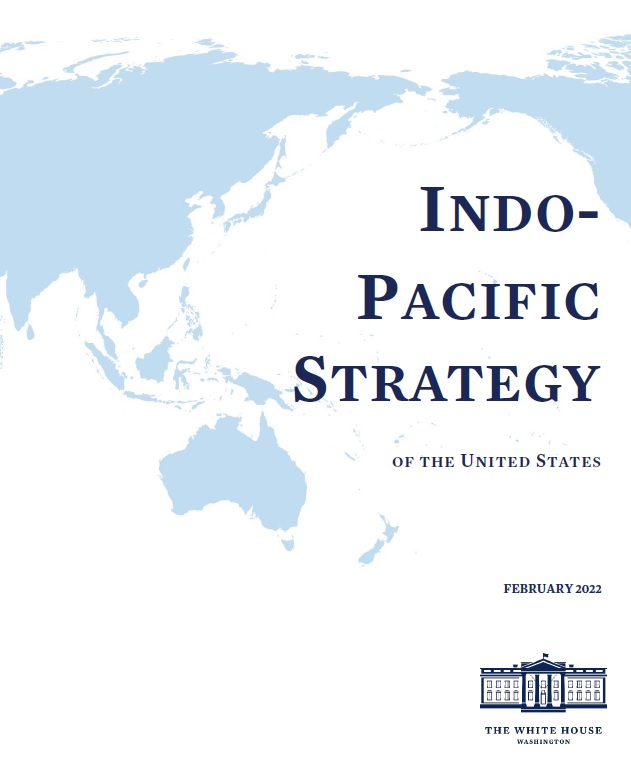Islamabad, Pakistan: Leaving no doubt about the future role of India in protecting US interests in Indo-Pacific, the White House has released “INDO-PACIFIC STRATEGY OF THE UNITED STATES”.
This document starts with a statement of President Joe Biden he delivered on September 24, 2021, at QUAD Leader’s Summit.
The Strategic Paper says:
The intensifying American focus is due in part to the fact that the Indo-Pacific faces mounting challenges, particularly from the People’s Republic of China (PRC). The PRC is combining its economic, diplomatic, military, and technological might as it pursues a sphere of influence in the Indo-Pacific and seeks to become the world’s most influential power. The PRC’s coercion and aggression span the globe, but it is most acute in the Indo-Pacific. From the economic coercion of Australia to the conflict along the Line of Actual Control with India to the growing pressure on Taiwan and bullying of neighbors in the East and South China Seas, our allies and partners in the region bear much of the cost of the PRC’s harmful behavior. In the process, the PRC is also undermining human rights and international law, including freedom of navigation, as well as other principles that have brought stability and prosperity to the Indo-Pacific.
The document says that “STRATEGIC MEANS” —-an alliance is a modernized alliance; flexible partnerships, including an empowered ASEAN, a leading India, a strong and reliable Quad, and an engaged Europe; economic partnership; new U.S. defense, diplomatic, development, and foreign-assistance resources; sustained focus on and commitment to the region at all levels of the U.S. government.
After announcing AUKUS that is multipurpose Alliance exploiting Section 123 of the U.S. Atomic Energy Act with a serious risk for nuclear proliferation, this strategic document clarifies what kind of the enduring ideal and shared commitment of attaining ultimate signal security into the Indo-pacific waters is a starting point of a new wave of strategic maneuvering against China accompanying by the havoc of Nuclear Proliferation.
Australia, the United Kingdom, and the United States on September 15, 2021, formed a multipurpose Military alliance with a drive of Collective security in the region of Indo-Pacific. The alliance is called AUKUS (abbreviation of Australia (A), United Kingdom (UK), and United States (US).

Under this alliance, Australia will acquire new long-range strike capabilities for its air force, navy and army, and nuclear submarines and related nuclear fuel from the United States and the United Kingdom. The Nuclear Nonproliferation Treaty (NPT) does not allow non-nuclear-weapon states to produce highly enriched uranium for naval reactor fuel. Nevertheless, the agreement to transfer the US or UK nuclear submarine technology including possible highly enriched uranium has been described as an act of nuclear proliferation, therefore a serious strategic concern for the region.
Australia, the United Kingdom, and the United States, in a shared communiqué, elicits the idea of AUKUS as guided by their enduring ideals and shared commitment to the international rules-based order, resolve to deepen diplomatic, security, and defense cooperation in the Indo-Pacific region, including by working with partners, to meet the challenges of the twenty-first century.
China believes that AUKUS and new US initiatives in Indo-Pacific are attempting to encircle the Chinese economy and the situation would surely affect South Asian countries and Chinese Belt and Road Initiative (BRI). The American strategy to confront the rise of China is a losing proposition because Five Eyes and Quad failed to stalk Chinese influence in Southeast and South Asia so “INDO-PACIFIC STRATEGY OF THE UNITED STATES” has been announced to gather all US initiatives under one umbrella to encircle China psychologically as well as strategically.
It is pertinent to remember that regional experts believe that the US is not ready to accept that it has lost the edge over China in reference to global Narrative, Soft Power edge, hard power efficacy, technological lead, and economic strength and US would continue to show muscles around China waters.
This strategic paper is also an eye-opener for Russia who after the recent visit of President Putin to India is considering India as a trustworthy allay because India has bought the S-400 Missile System from Moscow. Actually, this Indian move could be a part of the “Transfer of Technology” of Russian state-of-the-art gears to the United States.
The original document can be downloaded to click this link for the ready reference of readers
